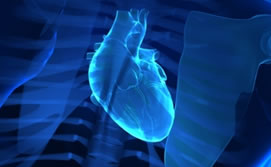Spanish researchers have made the first step toward cultivating a bioartificial human heart in the laboratory, which will assure 100% compatibility with the patient and reduce current waiting times.
Researchers from the Spanish Network of Cardiovascular Research (RECAVA) have managed to “decellularize” a human heart in the laboratory, to the point of achieving a skeletal structure that can be repopulated with cells from the recipient patient. It’s the first time in the world that this structure has been achieved in the lab.
The Network of Cardiovascular Research has presented images which demonstrate the success of this research. The project is a collaboration between a RECAVA team, coordinated by Gregorio Marañón Hospital cardiologist Francisco Fernández-Avilés, and a team led by biologist Doris Taylor from the University of Minnesota’s Center for Cardiovascular Repair (USA).
The research, referred to as “Scaffolds and Bioartificial Organs for Transplantation” (SABIO), uses a series of detergents that pass through coronary arteries, slowly eliminating the cardiac cells from the organ, until leaving a scaffolding from which a new heart can be generated.
Obtaining this matrix or “skeleton” is the first step toward “cultivating” bioartificial organs in the laboratory. The idea of being able to repopulate a human heart with stem cells from the recipient patient would eliminate not only the chance of the organ being rejected, but also the waiting time required to find a compatible heart.
